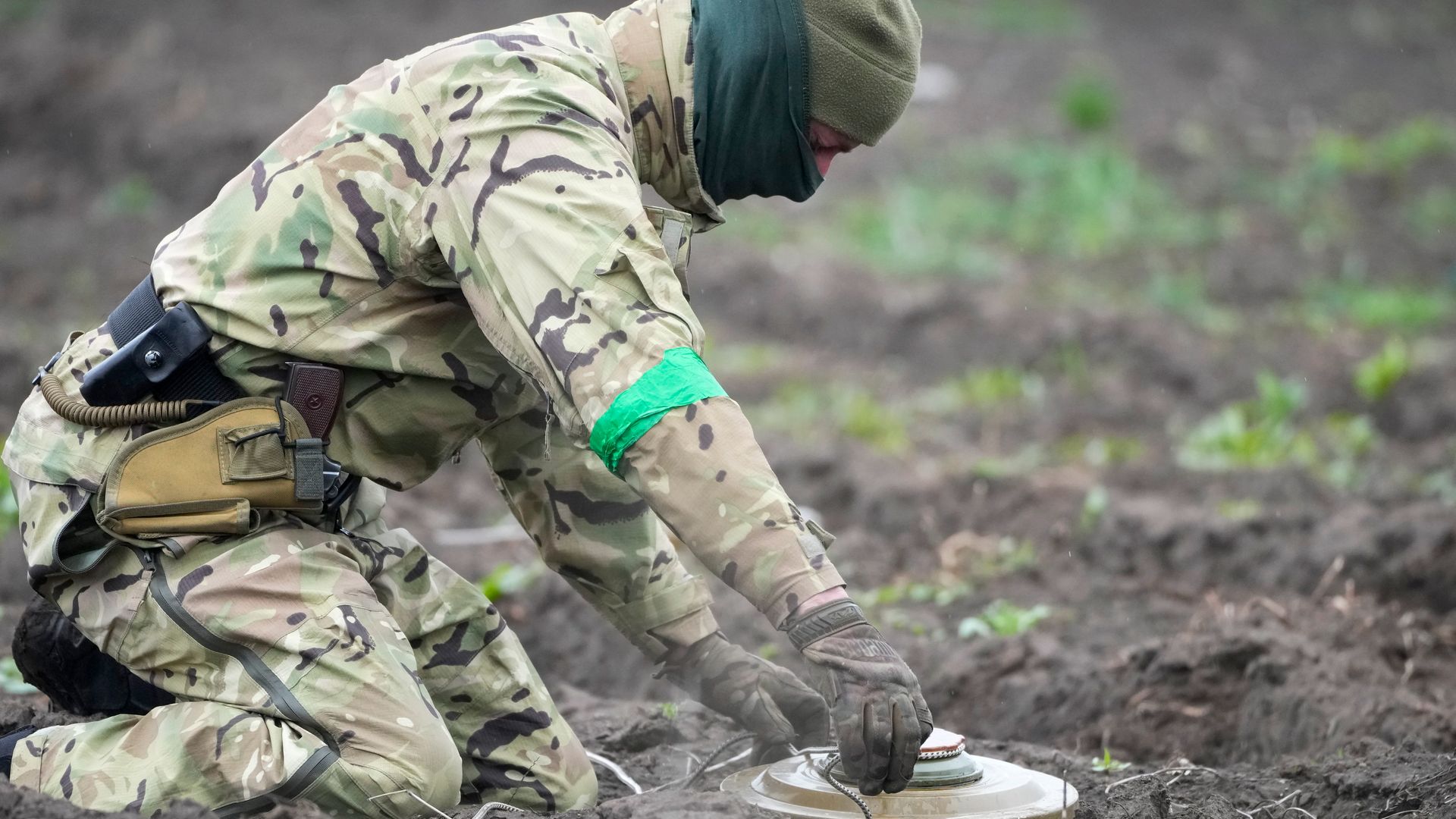
Minefields in Ukraine roughly the size of Florida slow counteroffensive
By Shannon Longworth (Reporter), Jack Aylmer (Producer)
Media Landscape
See how news outlets across the political spectrum are covering this story. Learn moreBias Distribution
Left
Right
Untracked Bias
The conflict in Ukraine, which began more than a year and a half ago, shows no signs of abating even as Ukrainian forces have initiated their counteroffensive against Russia. Recent actions by the U.S. government indicate that the war is expected to carry on for some time.
“We want to make sure that the Ukrainians have sufficient artillery to keep them in the fight in the context of the current counter-offensive, and because things are going a little slower than some had hoped,” Colin Kahl, the Pentagon’s top policy adviser, said.
Unbiased news.
Directly to your inbox. Free!
Learn more about our emails. Unsubscribe anytime.
By entering your email, you agree to the Terms & Conditions and acknowledge the Privacy Policy.
On Monday, July 24, it was revealed that the Biden administration plans to send up to $400 million in military aid to Ukraine, following recent American financial assistance totaling $2.3 billion just last week alone. This recent flurry of assistance comes as the conflict in Ukraine has escalated to include strikes on Moscow and Crimea, developments which, while seen as progress, are also posing new challenges for Ukrainian forces.
One of the most significant challenges faced by Ukrainian forces in their counteroffensive is the extensive presence of land mines throughout the country.
These mines now encompass an area roughly the size of Florida, making Ukraine the most mine-filled country in the world. Demining efforts are already underway, but experts believe that it could take close to 500 demining teams and 757 years to complete the task. The estimated cost of this work could exceed $37 billion by 2033, according to the World Bank.
“The biggest difference is the sheer number of mines,” said Ryan Hendrickson, who previously served in Afghanistan with the Green Berets and is now removing mines in Ukraine as a volunteer with Tip of the Spear Landmine Removals. “There are millions and millions of mines in Ukraine. Everything is land mined.”
The vast number of mines has significantly slowed down Ukraine’s counteroffensive efforts, prompting Western nations to rethink their support strategy. Instead of donating more weapons and vehicles, the focus has shifted to repairing and sustaining the equipment already sent to Ukraine. Among the crucial assets are U.S.-made mine-resistant armored fighting vehicles, British-built Wolfhound armored vehicles, and German-engineered Leopard tanks.
Repair facilities are being set up in Europe to refurbish armored vehicles and send them back to the front lines, in an effort to help ensure the continuation of Ukraine’s counteroffensive. Western nations have also been translating training and repair manuals for these weapons, providing critical assistance to Ukraine’s military, which primarily relies on either decades-old Russian equipment or relatively new weapons unfamiliar to them.
“We’re setting up repair facilities in Europe, we’re translating training and repair manuals, we have to do much more together, so there’s going to be more of a focus on that,” Pentagon Acquisition and Sustainment chief William LaPlante said.
A group of 22 countries, led by the U.S., Poland, and the United Kingdom, is coordinating these weapons repair efforts with the goal of keeping billions of dollars worth of equipment in Ukraine operational for its ongoing counteroffensive against Russia. However, Joint Chiefs Chair Gen. Mark Milley has warned that the counteroffensive is still in its early stages, and “there’s a lot of fighting left to go.”
Media Landscape
See how news outlets across the political spectrum are covering this story. Learn moreBias Distribution
Left
Right
Untracked Bias
Straight to your inbox.
By entering your email, you agree to the Terms & Conditions and acknowledge the Privacy Policy.
MOST POPULAR
-
 Getty Images
Getty Images
Democrats in Congress receive lowest approval rating in Quinnipiac poll history
Watch 2:597 hrs ago -
 Getty Images
Getty Images
AG Bondi reviewing Epstein documents for release, could hold client list
Watch 1:487 hrs ago -
 Getty Images
Getty Images
Speaker Johnson won’t support DOGE stimulus checks
Watch 2:069 hrs ago -
 Reuters
Reuters
UN chief reveals his plan for peace in Haiti to Caribbean leaders
Watch 2:1511 hrs ago




